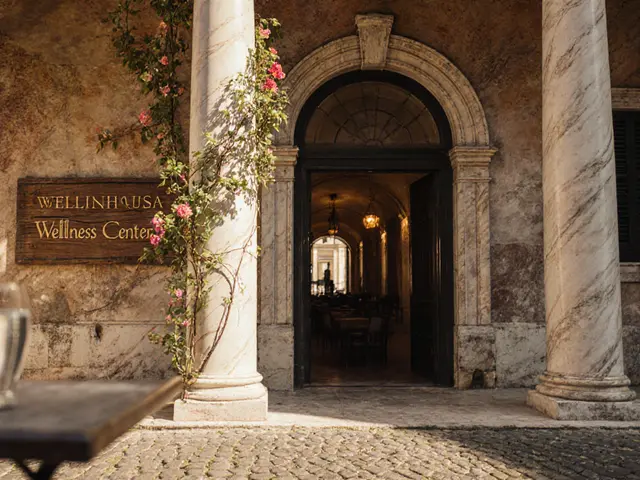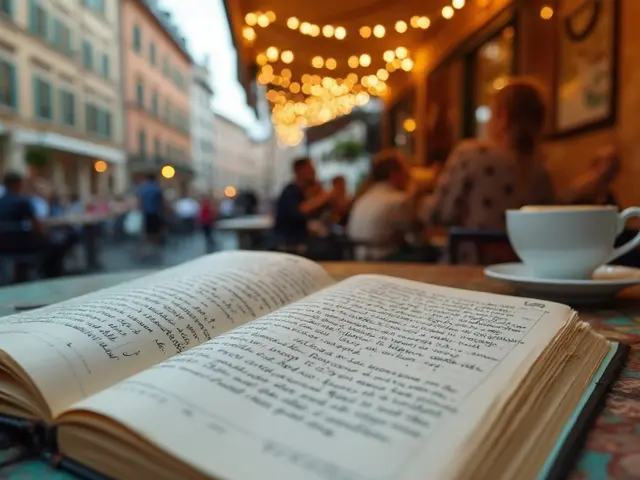
Walking through Rome’s cobbled alleys, you don’t just smell garlic and basil-you smell history. Every trattoria tucked behind a crumbling facade, every nonna stirring a pot in a back kitchen, is serving more than pasta. They’re serving centuries of tradition. But with over 10,000 restaurants in the city, how do you find the ones that actually taste like Rome-not the tourist traps with plastic menus and overpriced tiramisu?
Forget the Piazza del Popolo Crowds
The restaurants right by the Spanish Steps? Skip them. The ones with English-only menus and waiters waving menus at you? Avoid. Real Roman food doesn’t advertise. It hides in plain sight. The best spots are the ones locals line up for, not the ones with Instagram influencers posing with carbonara.Look for places with no English menu. Look for places where the tablecloths are checkered and the wine comes in carafes. Look for places where the chef nods at you in Italian and doesn’t ask if you want "extra cheese." That’s your sign.
Trattoria Da Enzo al 29
Tucked into the Trastevere neighborhood, this tiny 18-seat spot has been feeding Romans since 1975. No website. No online reservations. You show up at 7 p.m. and hope for a seat. If you get one, order the amatriciana. It’s made with guanciale from a local butcher, San Marzano tomatoes, and a splash of chili. The pasta is al dente-not because they follow a rule, but because they’ve been doing it this way since before you were born. The wine? A house red from Lazio, poured straight from the barrel. It costs €8. It’s the best €8 you’ll spend in Rome.Roscioli Salumeria con Cucina
This isn’t just a restaurant. It’s a temple of Italian cured meats and aged cheeses. Roscioli started as a deli in 1982 and slowly became one of Rome’s most respected tables. Their rigatoni alla carbonara isn’t creamy. It’s rich, eggy, and smoky-no cream in sight. The secret? Freshly ground black pepper and Pecorino Romano aged 18 months. They source their guanciale from a farm in Umbria that raises pigs on chestnuts. That’s why it tastes like earth and smoke, not salt.Don’t skip the crostini con fegatini. Chicken liver pâté with capers and onions, served on toasted bread. It’s simple. It’s bold. And it’s been on the menu since 1995. You won’t find it anywhere else in Rome.
La Pergola
If you want a view, go to La Pergola. It’s the only three-Michelin-star restaurant in Rome, perched atop the Rome Cavalieri Hotel. Yes, it’s expensive-€350 for tasting menu. But here’s the thing: it’s not just fancy. It’s Italian. The chef, Heinz Beck, doesn’t hide behind foams or edible flowers. He elevates Roman classics. The cacio e pepe here uses Pecorino from Sardinia and pepper ground fresh from the mill. The pasta is hand-rolled. The broth for the risotto alla romana is made from veal bones simmered 12 hours. You’ll pay for the view, the service, the silverware. But you’ll taste the soul of Rome in every bite.
Armando al Pantheon
Right across from the Pantheon, this family-run spot has been open since 1961. The walls are covered in wine labels, photos of celebrities, and handwritten notes from regulars. The owner, Armando, still greets guests at the door. His daughter runs the kitchen. They serve supplì-fried rice balls with mozzarella that stretches like a rubber band when you bite into them. Their amatriciana is thicker than most, with more guanciale and less tomato. It’s not the prettiest dish. But it’s the most honest.They don’t take reservations for parties under six. Walk in at 8:30 p.m. and sit at the bar. Order the spaghetti alla gricia. No tomato. No cheese. Just guanciale, pecorino, and pepper. It’s the original Roman pasta. The one that came before carbonara. And it’s perfect.
Il Pagliaccio
This isn’t your grandpa’s trattoria. Il Pagliaccio is modern. But it’s still deeply Roman. Chef Andrea Berton takes traditional flavors and twists them with precision. Their tonnarelli cacio e pepe uses a special pasta shape made with durum wheat and water only. The cheese is aged 36 months. The pepper? Whole black peppercorns toasted and ground tableside. The result? A dish that’s creamy without cream, spicy without heat, and unforgettable.They also serve a carciofi alla giudia-Jewish-style fried artichokes-that’s crispy on the outside, tender as butter inside. You won’t find this anywhere else in the city. Not even in the old Jewish Ghetto.
What to Order (and What to Avoid)
- Do order: Amatriciana, carbonara, cacio e pepe, supplì, fried artichokes, trippa alla romana, rigatoni alla vodka (yes, it’s real here).
- Avoid: Chicken parmigiana, spaghetti Bolognese, lasagna, anything with Alfredo sauce. These aren’t Roman dishes. They’re American inventions sold to tourists.
- Always ask: "È fatto in casa?" (Is it made at home?) If they say yes, you’re in good hands.

When to Go
Rome’s best restaurants fill up fast. The sweet spot? Arrive at 7:15 p.m. for dinner. That’s when locals eat. Not 8 p.m. Not 9 p.m. 7:15. If you show up later, you’ll get the last scraps of the menu-and the last table in the corner.For lunch, try between 1:15 and 1:45 p.m. That’s when office workers take their break. You’ll see waiters in white shirts, not suits. You’ll hear Italian, not English. And you’ll eat like a Roman.
Drink Like a Local
Skip the bottled water. Order acqua naturale or frizzante-still or sparkling. It’s cheap and tastes better than your tap water at home.Wine? Stick to Lazio. Try Cesanese del Piglio, a red with blackberry and leather notes. Or Frascati Superiore, a crisp white that cuts through rich pasta like a knife. Don’t ask for a wine list. Ask for what’s on tap. Or what the chef recommends. They know what pairs with the day’s catch.
And if you see a caffè corretto on the menu? Order it. Espresso with a splash of grappa. It’s the Roman way to end a meal.
Final Tip: Don’t Chase Ratings
Michelin stars, Tripadvisor rankings, YouTube reviews-they don’t guarantee flavor. The best meal in Rome might be at a place with no sign, no website, and no English menu. You’ll find it by wandering. By asking the barista. By following the smell of garlic and rosemary. By sitting at a table with no reservation and trusting the person who brings you the plate.Rome doesn’t serve food. It serves memory. And the best restaurants? They don’t just feed you. They let you taste the city’s heartbeat.
What’s the most authentic Roman pasta dish?
The most authentic Roman pasta is cacio e pepe-just Pecorino Romano cheese, black pepper, and pasta water. No cream, no butter, no garlic. It’s the simplest and oldest of the four classic Roman pastas, dating back to shepherds in the Apennines. If a restaurant adds cream, it’s not traditional.
Is it true you can’t get good food in tourist areas?
It’s not that you can’t-there are a few good spots near the Colosseum and Vatican. But the majority of restaurants in high-tourist zones serve pre-made pasta, frozen supplì, and bottled sauces. The real magic is in neighborhoods like Trastevere, Testaccio, and Monti, where locals live and eat. Walk 10 minutes away from the main squares, and the quality jumps dramatically.
Do I need to make reservations?
For the top spots like Roscioli, La Pergola, or Il Pagliaccio-yes. Book weeks ahead. But for smaller trattorias like Da Enzo or Armando al Pantheon, walk in. Most don’t take reservations, or only for large groups. Showing up at 7:15 p.m. gives you the best shot. If you’re turned away, ask the staff where they eat. They’ll point you to a better place.
What’s the best time of year to eat in Rome?
April to June and September to October. The weather is perfect, the crowds are thinner, and the ingredients are at their peak. Summer (July-August) is hot and busy, with many locals on vacation. Winter is quiet, but some smaller restaurants close. Avoid August entirely-most of Rome shuts down.
Are there vegetarian options in Rome?
Yes. Romans have always eaten vegetables. Try carciofi alla giudia (fried artichokes), pasta con le zucchine (pasta with zucchini), or pizza bianca with rosemary. Many restaurants offer a vegetarian pasta with tomato and basil. But don’t expect tofu or vegan cheese-those aren’t traditional. The best vegetarian meals here are rooted in the land, not trends.



